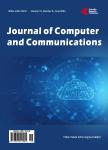Machine Learning-Based Approach for Identification of SIM Box Bypass Fraud in a Telecom Network Based on CDR Analysis: Case of a Fixed and Mobile Operator in Cameroon
Machine Learning-Based Approach for Identification of SIM Box Bypass Fraud in a Telecom Network Based on CDR Analysis: Case of a Fixed and Mobile Operator in Cameroon作者机构:Department of Electrical and Electronic Engineering College of Technology University of Buea Buea Cameroon Division of Information and Communications Technology National School of Posts Telecommunications and Information and Communication Technologies University of Yaoundé I Yaoundé Cameroon Department of Computer Engineering and Telecommunications National Advanced School of Engineering University of Douala Douala Cameroon
出 版 物:《Journal of Computer and Communications》 (电脑和通信(英文))
年 卷 期:2023年第11卷第2期
页 面:142-157页
学科分类:07[理学] 0701[理学-数学] 070101[理学-基础数学]
主 题:CDR Fraud Detection Machine Learning Voice Calls
摘 要:In the telecommunications sector, companies suffer serious damages due to fraud, especially in Africa. One of the main types of fraud is SIM box bypass fraud, which includes using SIM cards to divert incoming international calls from mobile operators creating massive losses of revenue. In order to provide a solution to these shortcomings that apply almost to all network operators, we developed intelligent algorithms that exploit huge amounts of data from mobile operators and that detect fraud by analyzing CDRs from voice calls. In this paper we used three classification techniques: Random Forest, Support Vector Machine (SVM) and XGBoost to detect this type of fraud;we compared the performance of these different algorithms to evaluate the model by using data collected from an operator’s network in Cameroon. The algorithm that produced a better performance was the Random Forest with 92% accuracy, so we effectuated the detection of existing fraudulent numbers on the telecommunications operator’s network.



